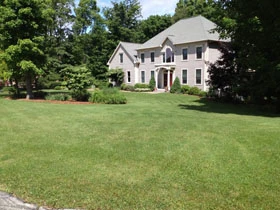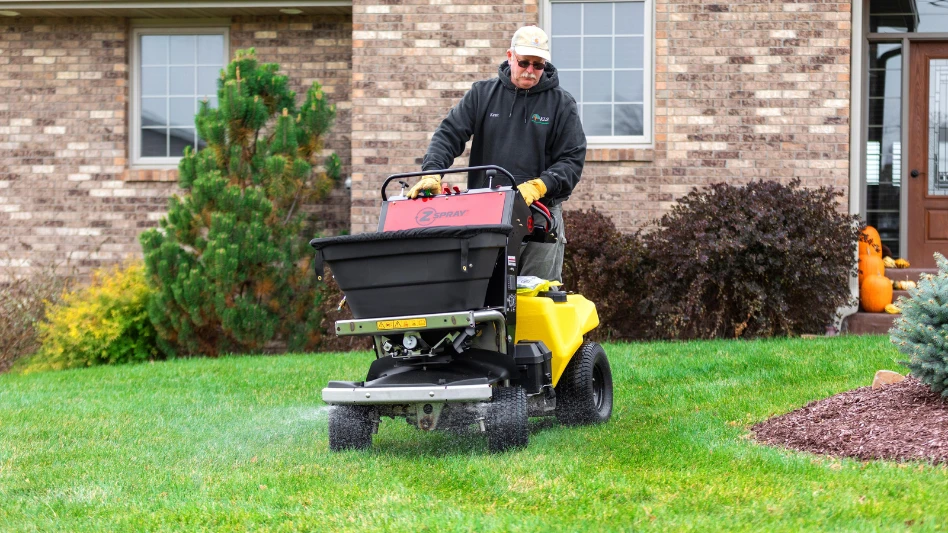
Once upon a time, Rick Brosseau, owner of Milrick Lawn Service, used synthetic chemicals to treat his customers’ lawns. Today, he is an accredited organic land care professional through the Northeast Organic Farming Association. Because of the accreditation, Brosseau has a set of standards to follow and he gave his views on bionutrition and some insight on how he practices organic lawn care at his Connecticut company.
How would you define bionutrition?
Bionutrition is, in my opinion, another term for organics. It uses organic ingredients to amend the soil. One difference in some of the companies I've researched is that peat moss is used in some of their products. Peat moss is forbidden in our standards due to the nature of the harvesting of the peat. I do not use anything that contains peat.
What are the advantages of organic lawn care/bionutrition?
The best advantage to the use of organic lawn care is that it eliminates the need for synthetics which use fossil fuels to create and are dangerous to the environment. Organics uses a holistic approach, a do-no-harm approach, and what's even better is that organics are sustainable. Using synthetic products, you'll need to apply that product four times per year every year. Their product basically inoculates the grass plant with a burst of readily available nitrogen. The grass plants quickly absorb what they need – and there's the bad part is that they will only use what they need so over usage will result in run off into the water shed – and will be nice and green for another six weeks before it needs another inoculation, and so on and so on. Organics treats the soil. We create an environment that is conducive to good plant growth through the use of naturally occurring materials – things like compost, lime etc.
What are the disadvantages of organic lawn care/bionutrition?
The disadvantage to using organics is that it takes time and money, but in the long term is better for the environment and on your wallet. With synthetics you get immediate results. Organics take time to change soil conditions and in this day and age of the need for things immediately can be somewhat of a detractor from its usage. I have numerous customers that have been organic for more than five years. Several of them, I've added nothing to their lawns this year – yet they are thick, lush and virtually free of weeds.
Is it a challenge to sell organic lawn care to customers?
What are some tips to market the service?
Most important is that you must be able to speak to the differences in the two methods of lawn care. Second, explain the costs and time frame. My rule of thumb is under-promise and over-deliver. And third, you need to stay in constant contact with your organic customers, following up on their lawns and educating them on how to mow, when to water, etc.
By percentage, how many of your customers use your organic service?
Forty percent (the other 60 percent are landscape maintenance customers). I have no synthetic customers. I toe the line to the standards and if I do come across a potential customer and they ask for synthetics, I offer them alternative companies to use.
How much more is an organic service compared to a synthetic service?
It depends on what the soil evaluation results are, but typically it can be twice to three times as much for the first couple of years. We have to amend the soil and that takes time. However, over time, say four, five, six years and beyond, less inputs are needed because you've created a self-sustaining environment that will thrive. I converted a lady from the synthetics this year and she was having a guy from come out once a month from March through November charging her $50/visit to put down stuff. Now her lawn is beautiful, but she lives near wetlands and does not want to harm the environment so she switched to our program.
I will sample her soil and more than likely need to amend it with leaf compost and other natural additives to help improve the biology in the soil. She'll end up spending about $1,400 with us this year versus $450 with the other company. Our (profit margins) are around 25 percent. Now, the good thing is that next year her lawn will need fewer and fewer inputs as the soil is doing what mother nature intended it to do. Have you ever seen somebody fertilizing the forest? No; yet it thrives.
Get curated news on YOUR industry.
Enter your email to receive our newsletters.Latest from Lawn & Landscape
- PERC helps debut propane direct-injection fuel system at ACT Expo 2025
- Retargeting Ads – A Secret Weapon for Growing Your Lawn Care Business
- Leading a growing company
- Project EverGreen launches Clean Air Calculator
- Rain Bird acquires smart lawn care company OtO from Toronto
- PBI-Gordon names Marvin as VP of research and development
- Mean Green rolls out Vanquish Autonomous mower
- Focal Pointe launches new podcast series






